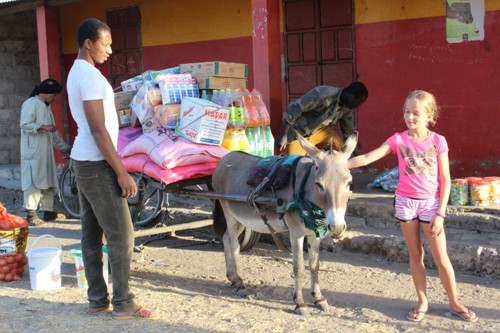Who are we?
We are Arlette, Luna and Luc.
We are entrepreneurs and active in the tourism sector. Therefore, as a family, we can only go on holiday during the winter months. Since we are not winter sports enthusiasts, we like to look for warmth and sun.
In 2014, we travelled to Senegal for the first time. As we did not know the country at the time, we booked a stay in a hotel run by a Belgian woman. That gave us a certain kind of confidence.
So that's how we ended up in Toubacouta, a village in the "Fatick" region, located on the edge of one of the largest protected mangrove forests in the world. Explanations of the region can be found in the article to the right :
Toubacouta has a steppe climate. Throughout the year, rainfall is low. The average temperature is 26.5 degrees and the rainfall is 592 mm/year.
The people of Toubacouta, and by extension the entire region, are known for their hospitality, according to travel guides. They call it "Teranga" locally. Soon we experienced that "Teranga" is not an empty word. We had only been in Toubacouta for about three days before our daughter Luna was allowed to participate in the rehearsals of a local "Djembé group".
 Les Artistes de Toubacouta
Les Artistes de Toubacouta
It was soon clear to us that if you approach the locals with respect, you will get back a lot more respect. We got to know some people from the village who introduced us to local customs, culture and the region.
This created mutual trust. We went exploring in the region around Toubacouta with one of them, "James". There are few tourist attractionsin the Toubacouta region as we know them in our western world . There is the wildlife park : 'Fathala', where a number of African animals live in a kind of reserve. There is the "Ile de Coquillage", an island which, as its name suggests, is made entirely of shells, and there is a place in the mangrove forest where thousands of water birds, such as pelicans, gather around sunset to roost. Otherwise, the area's impressive nature is the main tourist attraction.
Together with our local guide James, we visited one of the villages near Toubacouta. This was because we wanted to see how the locals, who do not have the luxury of potable water and electricity, survive in this hot and dry climate. Not wanting to come across as "curious tourists", we asked James if we could do something for the village, and frame our visit in a broader perspective than curiosity. He advised us to bring rice for the villagers.
We then headed towards the village using the local means of transport, donkey and cart.

It is during and after visiting this village that we realised the luxury we live in, and that we can make a difference in this region through simple means.
This is how the idea for our "Water for Toubacouta" project was born. In fact, the village had a well, and thanks to this well, they could pump water to irrigate a "garden" and grow their own vegetables. This well clearly made a difference to the four families in this village.
On the slideshow to the right, you can see some photos from our visit to the "Village Without a Name"